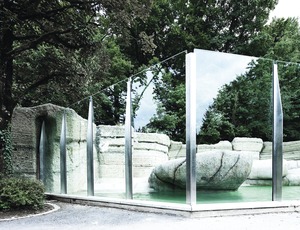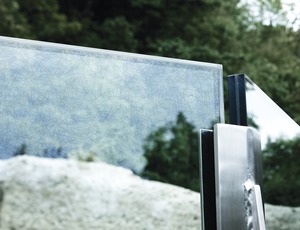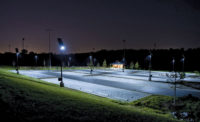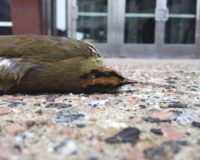

Despite a high rate of bird collisions with glass, products to reduce bird deaths are typically an afterthought in building design. Architects often inadvertently specify bird-friendly products, such as fritted glass, screens or window patterns, which make glass less transparent and reflective. Higher-priced, bird-friendly products that preserve the clear-glass aesthetic are less common.
Ornilux is a specialty brand of insulated glass manufactured by Arnold Glas. It has an inner glass layer with a patterned coating that is visible in the ultraviolet spectrum. "Because people are not able to perceive UV light and birds can perceive UV light, we can have a pattern that is invisible to people but birds can see," says Lisa Welch, Ornilux marketing representative. "From the outside of a building looking in, you may catch a shadow of the pattern, but it's mostly imperceptible."
Arnold Glas, based in Remshalden, Germany, launched Ornilux in the U.S. in 2010, after beginning production in 2006. The glass has been used in zoo enclosures as well as U.S. Fish & Wildlife Service facilities.
"We also get a lot of universities looking to do the next cool, environmentally friendly thing," says Welch. The University of Massachusetts, Amherst, used Ornilux for an atrium.
Ornilux is higher in price than most conventional glass, owing to small production runs and niche demand. "Compared to standard low-E, insulated glass, Ornilux is going to cost between two and two and a half times more per square foot," says Welch. "Compared to fritted glass, Ornilux costs only a few dollars more per square foot."
Deciding whether to use bird-friendly glass is not a price discussion, says Welch. "It'll have to be a decision to have bird-friendly windows," she says.
Bird-friendly window films can cost only $2 to $3 per sq ft. An opaque film, named Collid- Escape, has lots of small holes, which let in about 50% of the light, says Jeff Rank, CollidEscape's specialty programs manager. "It creates a screen effect [in which] you don't really notice it on the inside, but it removes glare on the external surface of the glass so that birds no longer fly into it," he adds.
CollidEscape initially offered only opaque and patterned window films, which the maker claims will stop almost all bird impacts. In 2011, the company began selling a clear version of its perforated film.
"It makes the outside of the glass look like it has been lightly frosted. So, when we do large glass buildings, we can maintain the aesthetic, but the surface is disruptive enough to give birds a visual cue," says Rank. "We don't guarantee [the clear film] will stop all bird collisions, but it will reduce bird deaths by about 70%."
CollidEscape also has tested transparent films visible in the ultraviolet spectrum, but costs are still too high. "There are some advances in nanotechnology that may offer solutions, but the price is prohibitive right now," says Rank. He expects that to change based on recent reductions in manufacturing costs.






Post a comment to this article
Report Abusive Comment